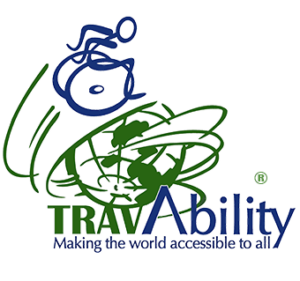The study used the following definition for ‘disability’:
An on-going condition, requiring special care, that substantially inhibits a person’s ability to participate effectively in activities, or perform tasks or actions unless they have aids or support.
This would include a condition which is permanent but may vary in intensity (e.g. multiple sclerosis) or a long-term temporary disability (lasting more than 6 months).
A person with a disability might face special needs when travelling, in accommodation, and in using other tourism services.
Value and size of the sector
There is a sizeable, growing and diverse range of travellers with accessible needs. For simplicity in this report they are referred to as a sector. For simplicity, in this report they are referred to as a sector. Eighty-four per cent of travellers with a disability or their carers have taken an overnight trip as defined in Tourism Research Australia’s National Visitor Survey (NVS), that is, an overnight trip least 40 kilometres from home. Around one-quarter have also taken overnight trips closer to home. Approximately three-quarters of those with a disability travel, with more people stating they would like to if the products or technologies existed to enable/support their travel. The following estimates are based on the domestic market only, therefore do not include estimates of international travellers and spend.
Australia
An estimate of the size of the current accessible tourism sector for overnight and/or day trip travel is around 1.3 million individuals, or 7% of the total Australian adult population. However, as many people with a disability travel with others, especially when they need to travel with a carer, a multiplier of 2.45 (overnight) or 2.62 (day trips) needs to be applied. By this measure, 14% of the Australian population (an estimated 3.4 million people) has need of accessible tourism experiences and services for an overnight and/or day trip.
An estimate of annual expenditure by tourists with a disability (both overnight and day) based on NVS data would be around $3.2 billion annually (of which $2.7 billion is overnight spend and $546 million is day trip spend). Again, the multiplier of those travelling with a person with a disability means the true value of the sector could be as high as $8.0 billion.
Victoria
Travellers with a disability who had taken at least one domestic trip (overnight and/or day trip) represented 7% (349,000) of the Victorian adult population.
When considering the average travel party size was 2.24 for a Victorian resident with a disability (including adults caring for a child with a disability), this represented 12% (784,000) of Victoria’s total population.
Estimated spend for travellers with a disability was $680.1 million (approximately 4% of total domestic spend in Victoria), of which 80% was overnight spend.
Estimated spend for the travel party (including the person with a disability) was $1.7 billion (approximately 10% of total domestic spend in Victoria), of which 79% was overnight spend.
Queensland
Travellers with a disability who had taken at least one domestic trip (overnight and/or day trip) represented 8% (289,000) of the Queensland adult population.
When considering an average travel party size was 2.28 for a Queensland resident with a disability (including adults caring for a child with a disability), this represented 13% (657,000) of Queensland’s total population.
Estimated spend for travellers with a disability was $781.0 million (approximately 4% of total domestic spend in Queensland), of which 84% was overnight spend.
Estimated spend for the travel party (including the person with a disability) was $1.9 billion (approximately 10% of total domestic spend in Queensland), 84% of which was overnight spend.
There are a number of Australians with a disability (including adults caring for a child with a disability) who are not currently travelling, but who would likely travel with certain industry improvements (in accommodation, transport, current technologies). The potential of this sector is approximately $735 million (an additional 1% in spend). When travel party is factored in, this comes to $1.8 billion, or an additional 2% in spend for the travel party (including the person with a disability).
Although people with a disability generally have lower incomes than the average for the population as a whole, not all need to be considered as low income. More than one-quarter of those who identified as having a disability were in the top two income categories (disposable income above $900 per week).













